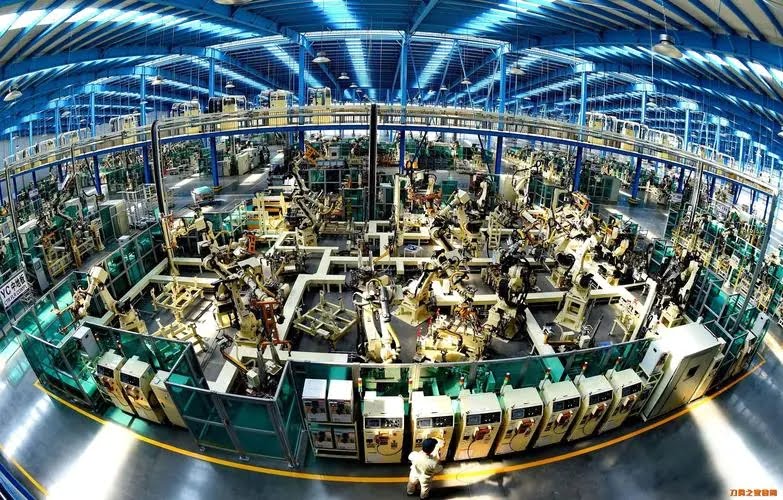In recent years, the world has witnessed a remarkable technological advancement known as 3D printing, or additive manufacturing. This groundbreaking innovation has the potential to revolutionize the traditional supply chain model, bringing about transformative changes in various industries. 3D printing has already proven its capabilities in producing intricate and complex objects with incredible precision. In this blog post, we will explore how 3D printing is poised to disrupt the conventional supply chain, offering unprecedented benefits in terms of efficiency, cost-effectiveness, sustainability, and customization.
The Traditional Supply Chain Model: Challenges and Limitations
The traditional supply chain model has long been plagued by inherent challenges and limitations. One of the most significant drawbacks is its reliance on centralized manufacturing and distribution centers. This approach leads to long transportation times, increased carbon emissions, and heightened vulnerability to disruptions, such as natural disasters or geopolitical tensions. Additionally, traditional manufacturing processes often entail high setup costs, especially for small-batch production, making it financially unviable for many businesses.
Empowering Decentralization with 3D Printing
Heading into a new era of manufacturing, 3D printing offers a powerful solution to decentralize production. The ability to create objects locally, on-demand, and at the point of consumption is a game-changer. Companies can now establish smaller, more agile production units, bringing manufacturing closer to the end-users. This shift not only reduces transportation costs but also minimizes the carbon footprint, making supply chains more sustainable and environmentally friendly.
Reducing Lead Times and Inventory Costs
With traditional supply chains, long lead times often result in excess inventory to mitigate uncertainties in demand and supply fluctuations. This excess inventory ties up substantial financial resources and warehouse space. 3D printing can significantly cut down lead times as it enables rapid prototyping and production. Manufacturers can respond quickly to changing market demands, thereby reducing the need for excessive stockpiling. As a result, businesses can achieve a leaner and more efficient inventory management system, ultimately reducing operational costs.
Customization and Personalization - Catering to Individual Needs
One of the most exciting aspects of 3D printing lies in its unparalleled ability to offer customization and personalization. Traditional manufacturing processes struggle to meet the diverse and ever-changing demands of consumers. However, 3D printing empowers businesses to tailor products according to individual preferences, ensuring higher customer satisfaction. Whether it's personalized medical devices, bespoke fashion items, or customized automotive parts, 3D printing opens up a world of possibilities for catering to unique needs.
Enhancing Design Flexibility and Innovation
3D printing liberates designers from the constraints of conventional manufacturing techniques. Unlike traditional methods that may require specific molds or tooling, 3D printing allows for complex geometries and intricate designs without incurring significant costs. This newfound design flexibility sparks innovation across various sectors, including aerospace, healthcare, architecture, and consumer goods. Engineers and designers can now explore creative concepts that were once considered impractical, thereby pushing the boundaries of what's possible.
Quality Control and Intellectual Property Considerations
As with any transformative technology, 3D printing does bring about certain challenges, especially in terms of quality control and intellectual property rights. Manufacturers must establish stringent quality assurance measures to ensure consistent and reliable production. Moreover, with the ease of digital sharing and replication, protecting intellectual property becomes paramount. Ensuring that 3D-printed objects adhere to industry standards and regulatory requirements is crucial for building trust and authority in this evolving ecosystem.
Empowering Local Economies and Reducing Global Disparities
The decentralization aspect of 3D printing can empower local economies, especially in developing regions. By establishing local manufacturing hubs, these areas can reduce their dependence on imports and boost employment opportunities. 3D printing could play a significant role in bridging the gap between developed and developing countries, enabling a more inclusive and balanced global economy.
Conclusion
In conclusion, 3D printing represents a paradigm shift in manufacturing and supply chain management. By decentralizing production, reducing lead times, enabling customization, and fostering innovation, 3D printing offers unparalleled benefits that stand to revolutionize the traditional supply chain model. Embracing this transformative technology with the right mix of expertise, trust, and commitment to quality can unleash a new era of efficient, sustainable, and customer-centric manufacturing practices, benefiting businesses and consumers alike. As we continue to witness the evolution of 3D printing technology, its potential to reshape industries and empower local economies is undeniable, paving the way for a brighter and more sustainable future.
Frequently Asked Questions
1. What is 3D printing, and how does it differ from traditional manufacturing methods in the supply chain context?
Understanding the fundamental differences between 3D printing and traditional manufacturing methods is essential in comprehending the revolutionary impact of 3D printing on the traditional supply chain model. In this section, we will explore the concept of 3D printing and its distinguishing characteristics that set it apart from conventional manufacturing processes.
2. How does 3D printing enable decentralized production in the supply chain?
Decentralized production is one of the key advantages that 3D printing brings to the supply chain. This section will delve into the concept of decentralized production and explain how 3D printing facilitates a more distributed and localized manufacturing approach.
3. What are the benefits of customization and personalization in the supply chain through 3D printing?
Customization and personalization have emerged as powerful consumer demands in various industries. 3D printing plays a pivotal role in meeting these demands, providing businesses with unique opportunities to offer personalized products to their customers. This section will explore the benefits of customization and personalization enabled by 3D printing in the context of the traditional supply chain.
4. How does 3D printing foster innovation and design flexibility in the supply chain?
Innovation and design flexibility are vital drivers of growth and competitiveness for businesses. 3D printing's unique capabilities in breaking the barriers of traditional manufacturing processes enable unparalleled opportunities for innovation and design freedom. This section will discuss how 3D printing fosters creativity and facilitates innovative advancements within the supply chain ecosystem.




